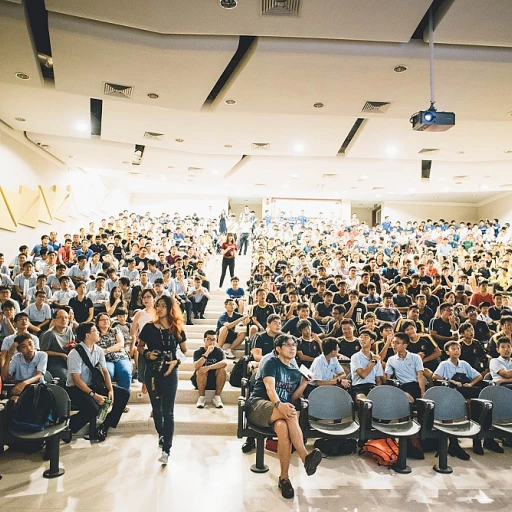
Understanding Intermittent FMLA Leave
Decoding the Intricacies of Intermittent FMLA Leave
The Family and Medical Leave Act (FMLA) was established to protect employees' jobs while they take time off for specific family and medical reasons. Among these, intermittent FMLA leave allows employees to take leave in non-consecutive periods. This flexibility can be crucial for managing a serious health condition, caring for a family member, or addressing other qualifying FMLA reasons.
Understanding the nuances of intermittent leave is essential for both employers and employees. The intermittent leave framework is intended for situations where an employee's own health is at risk, or they need to care for a seriously ill family member. For example, employees dealing with chronic health conditions or those who act as primary caregivers may require periodic absences from work.
Under the FMLA, employees are entitled to a total of 12 weeks of leave care within a 12-month period. It is important for employees to provide notice and the necessary documentation, such as a medical certification, to their employer. This ensures compliance with FMLA regulations and helps prevent any potential disputes over leave requests.
Both employers and employees face challenges in coordinating call procedures for intermittent leave, as it requires managing unscheduled absences and maintaining productivity. Employers must balance adherence to the regulations while ensuring seamless business operations.
For more insights into streamlining complex HR processes, you can explore solutions for streamlining onboarding and compliance requirements.
Current Challenges in FMLA Call-In Procedures
Challenges Employers Face with FMLA Call-In Procedures
Navigating the call-in procedures for the Family and Medical Leave Act (FMLA) can present a myriad of challenges for both employers and employees. The complexities arise mainly due to the intermittent nature of the leave and the necessity for compliance with established regulations. For employers, managing intermittent FMLA leave requires meticulous tracking of employee absences. Each employee may have a different schedule when taking FMLA leave, whether it's due to a serious health condition, caring for a family member or any other qualifying reason. This often demands a system that can handle unpredictability and maintain accurate records over the month period in which the leave is taken. Failure to do so can result in compliance issues. Employees, although protected, must provide timely and sufficient notice, sometimes alongside medical certification. Yet, inconsistencies in the call procedures can lead to misinterpretations of these requirements. Employers must assess each call for compliance, determining the validity of the leave request and ensuring it meets the FMLA qualifying criteria. HR departments are obligated to ensure each notice is properly documented and verified, which means cross-referencing notices with the medical certification provided by the health care provider. Employers also face the challenge of maintaining sufficient coverage and managing workloads during an employee's absence, which necessitates informed workforce planning. Without the right protocols, employers may struggle to effectively address these challenges, risking employee dissatisfaction and potential legal repercussions. Therefore, it's crucial for employers to streamline these procedures to minimize errors and ensure proper care and fair treatment for employees taking FMLA leave. To explore further how AI can streamline these operational challenges, visit enhancing restaurant operations with PEO solutions. This insight could provide applicable strategies for more effective call-in procedure management.The Role of AI in Enhancing FMLA Procedures
Integrating Artificial Intelligence to Improve FMLA Call-In Procedures
The ever-evolving landscape of human resources is seeing a significant transformation with the infusion of artificial intelligence into various processes. This is particularly evident in how AI is enhancing the efficiency and accuracy of FMLA call-in procedures. Employers are increasingly turning to technology to mitigate the challenges associated with intermittent leave due to serious health conditions, with a keen focus on reducing time inefficiencies while adhering to regulations. Artificial intelligence significantly enhances the management of FMLA procedures by streamlining communication between employees and employers. When an employee requires intermittent FMLA leave due to a qualifying reason, AI can facilitate automated reminders to ensure timely notice, preventing last-minute absenteeism. AI systems are capable of analyzing patterns in employee absences, helping HR teams anticipate needs and plan accordingly. Moreover, AI-driven tools can efficiently assess medical certifications submitted by care providers. With AI's ability to cross-verify medical documentation against current FMLA regulations, both employers and employees gain a clearer understanding of what constitutes a serious health condition and its corresponding qualifying criteria. This reduces ambiguities and possible delays in the leave approval process. The integration of AI also brings a personalized touch to managing employee FMLA leave care. AI applications, such as chatbots and virtual assistants, provide round-the-clock support and instant responses to employee queries pertaining to their leave status, ensuring that employees receive the necessary care and support for their family members or covered servicemember. Given these advancements, the role of AI in HR continues to evolve, fostering a greater alignment with employee health needs and employer responsibilities. For those interested in exploring how AI is changing HR reporting for the better, further insights can be found in this comprehensive report. Such technological adoption marks a progressive step towards more efficient workplace management, highlighting AI as a crucial ally in the realm of human resources.AI Tools and Technologies for HR
Innovative AI Applications in FMLA Call-In Processes
In light of the challenges associated with the current FMLA call-in procedures, AI tools and technologies are paving the way for more efficient management of intermittent FMLA leave. By effectively leveraging these technologies, employers can enhance the employee experience while ensuring compliance with FMLA regulations.- Natural Language Processing (NLP): AI-powered NLP tools can significantly streamline the process of collecting and understanding FMLA leave notices. These tools can automatically interpret spoken or written communication from employees regarding their absences, enabling a seamless flow of information to HR departments.
- Automated Scheduling Systems: Intermittent leaves can disrupt workforce management. AI-driven scheduling systems facilitate optimal labor distribution by predicting absence patterns based on historical leave data and integrating real-time employee availability.
- Data Analytics: Utilizing AI to analyze data related to employee absences, health conditions, and certification requirements can help employers identify trends, predict potential challenges, and optimize resources. These insights can be instrumental in predicting peak times for serious health conditions or family care leave.
- Chatbots and Virtual Assistants: These AI tools can interact with employees, providing instant information about FMLA leave processes and responding to frequent queries. This reduces administrative burdens and ensures that employees get timely assistance regarding their intermittent leave.












